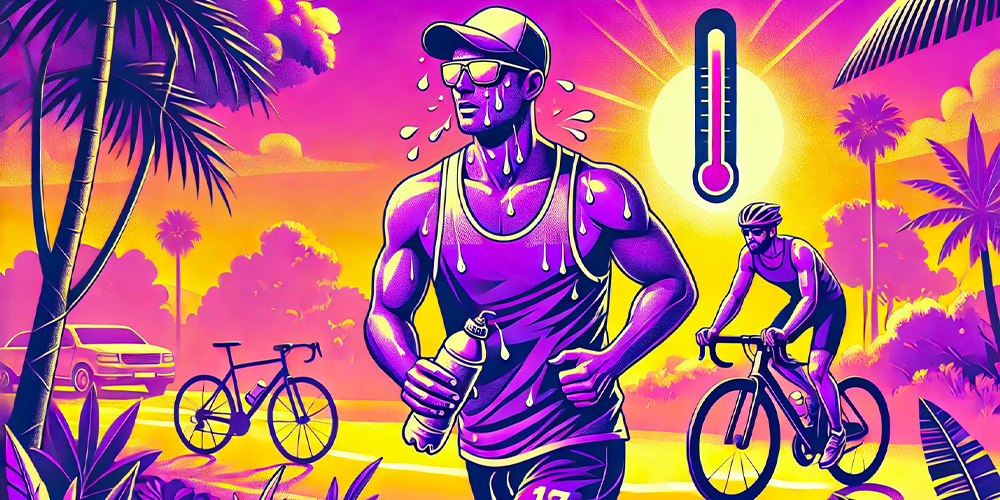High temperatures can be stressful for the body, and in the worst case, they can lead to heat stroke. Therefore, it is essential to plan training sessions wisely and protect yourself as much as possible during competitions.
 Author:
Author:
Dr. med. Patrik Noack, head of Medical Center, head of sports medicine, specialist in general internal medicine FMH, sports medicine SEMS, Medbase Abtwil
The problem with sports and high temperatures
Exercising in high temperatures can be dangerous if the body cannot cool down adequately. During physical exertion, the core body temperature rises, and if external temperatures are also high, the body is forced to cool itself more. This is achieved through increased breathing and, even more effectively, through the evaporation of sweat on the skin. However, the evaporation mechanism is limited when humidity is also high.
Consequences for the body
Heat is stressful for the body as it tries to compensate for the high temperatures through sweating. Increased sweating can lead to significant fluid and electrolyte losses, while blood vessels dilate and blood pressure drops. This can overload the cardiovascular system and lead to heat-related illnesses such as heat exhaustion and heat stroke, or sunstroke if there is too much direct sunlight on the head and neck.
Immediate action in case of heat stroke
If the body temperature rises to 40.5 to 41 degrees Celsius, thermoregulation can be disrupted, meaning the body’s cooling systems fail and overheating worsens. Symptoms include disorientation, coordination problems, and increased irritability. This is referred to as heat stroke, which, if untreated (avoid direct sunlight, cooling, fluid and electrolyte intake), can lead to seizures, paralysis, unconsciousness, and even death.
Performance diagnostics at Medbase
The sports scientists and sports physicians at Medbase check your performance level with an endurance test. Based on this, they explain to you in a clear and uncomplicated way how you can optimally incorporate the results into your training. Book now
What to consider in high temperatures
1. Stay well hydrated
Ensuring sufficient intake of fluids and electrolytes is crucial in the heat. As a guideline, one liter per hour is recommended, but this can vary individually. For very intense training or competitions, salt tablets and/or “Sour Shots” (pickle juice) can help prevent cramps.
2. Train in the morning or evening
The most important thing is to avoid the midday heat, as temperatures, sunlight, and ozone levels are highest then. It is coolest and freshest in the morning. In the late evening, the risk is also lower. Those who want to train regardless of the time of day should ideally use an air-conditioned gym, a cooled fitness center, or an indoor pool during high heat.
3. Avoid ozone exposure and high humidity
Ozone can irritate the airways, and with humidity above 50%, it becomes more difficult for the body to dissipate heat effectively. Therefore, it is best to schedule training in the early morning hours when ozone levels and heat are lowest.
4. Shade and sun protection
To avoid direct sunlight, training should be done in the shade of a forest or indoors. Additionally, don’t forget sunscreen when training outdoors. It is especially important to ensure that the sunscreen is water-resistant and that highly exposed areas such as the nose, neck, and shoulders are well and repeatedly covered. In the sea, use coral-friendly sunscreens.
5. Outfit
Clothing with integrated UV protection and moisture-wicking properties is helpful. Also, remember to wear a hat or head covering during running training. A wet cloth covering the neck can help keep the neck cool.
6. Reduce intensity
To avoid unnecessary stress on the circulatory system, it is recommended to slightly reduce the training heart rate.
Who is Medbase?
Medbase is the largest multidisciplinary sports medicine network in Switzerland, offering specialized sports medicine services for athletes, clubs, and sports associations of all activity levels in sports medicine, sports physiotherapy, performance diagnostics, and training consulting.
For more information, visit Medbase.

